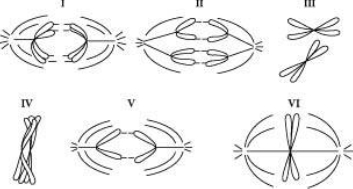In this video, we're going to introduce the first part of meiosis, which is meiosis 1. Recall from our previous lesson videos that before meiosis can even begin, the process of interphase needs to occur first. Notice over here in our image down below on the left-hand side, we're first showing you that interphase needs to occur before meiosis can even begin. Recall that interphase consists of the G1, the S, and the G2 phase. During the S phase of interphase, that is when the DNA gets synthesized or replicated. Before meiosis can even begin, interphase takes place and the DNA must be replicated. At that point, after the G2 phase of interphase, the cell can enter into meiosis 1. What you'll notice about meiosis 1 is that it has very similar steps to mitosis in terms of having a prophase, a metaphase, an anaphase, a telophase followed by cytokinesis. One thing that you'll note is different is that the phases of meiosis 1 are all followed by a 1. Notice here we have prophase 1, metaphase 1, anaphase 1, telophase 1, indicating that these are the phases of meiosis 1.
Recall from our previous lesson videos when we were talking about mitosis that sometimes the phase prometaphase, which would come between prophase and metaphase, is sometimes batched with the previous phase, prophase 1. Even though we're not showing you a prometaphase here in this image, the events of prometaphase are still taking place in prophase 1. Really, the events of prophase 1 and telophase 1 are going to be very similar to the events that occurred in mitosis. However, meiosis 1 is going to differ significantly in both metaphase 1 as well as anaphase 1. Because it's just metaphase 1 and anaphase 1 that differ significantly, this is where we're going to put most of our focus. Notice that our image, down below, has these two phases in blue here to help emphasize that these are really the two phases that differ the most from mitosis.
In metaphase 1, of course, the M in metaphase represents the M of the middle. In metaphase 1, what's going to happen is that homologous chromosomes are going to pair up, and they're going to align themselves in the middle of the cell, but they'll align themselves in the middle of the cell in two rows. This is the big difference here, that these chromosomes are aligning themselves in two rows instead of aligning themselves in one row like what we saw in mitosis. If we take a look at our image, down below, at metaphase 1, what you'll notice is that in metaphase 1, the homologous chromosomes are pairing up with each other to create two rows.
During anaphase 1 of meiosis 1, it's the homologous chromosomes that are going to separate from each other, while the sister chromatids themselves remain connected. This is another big difference between meiosis 1 and mitosis because during mitosis, the sister chromatids would separate, but during meiosis 1, the sister chromatids remain connected, and it's the homologous chromosomes themselves that are going to be separated. Notice that this homologous chromosome is separating in this direction and so is this one here going towards this end of the cell while this homologous chromosome here is going towards this end of the cell and this one here is going towards this end of the cell. The homologous chromosomes are separating but the sister chromatids themselves still remain intact, and so that means that we still have replicated chromosomes here.
This is going to be a big difference between meiosis and mitosis. Later in our course, we're going to do a side-by-side comparison to further differentiate between these two and their similarities as well as their differences. Again, the main phases that are going to be significantly different in meiosis are going to be metaphase 1 and anaphase 1. Prophase 1 and telophase 1 are going to be pretty much the same exact events that occurred during mitosis in those same phases. After telophase 1, you can see here, there is going to be the process of cytokinesis, and cytokinesis is the division of the cytoplasm, splitting the cell into two. Cytokinesis during meiosis 1 is actually going to produce two haploid daughter cells.
These two haploid daughter cells that result can then begin the second half of meiosis, which is meiosis 2. Meiosis 2 is going to begin with these two cells that are now haploid. You can see they have half the number of chromosomes in comparison to the very beginning. Notice that there were originally four chromosomes here in this image in the beginning, that would be the diploid number for this example, and at the end, each cell only has two chromosomes, which is half of four, meaning that these are going to be haploid. This here really concludes our introduction to meiosis 1 and how it differs most significantly from mitosis. We'll be able to get some practice applying these concepts and then talk about meiosis too as we move forward in our course. I'll see you all in our next video.


